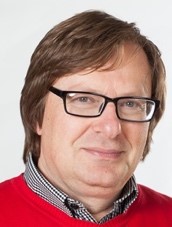Events
How to assess operational stability of perovskite solar cells with reversible degradation?*
November 17, 2017 at 12 noon/34-401B
Eugene Katz
Ben-Gurion University of the Negev, Israel/ Department for Solar Energy and Environmental Physics

Development of hybrid organic-inorganic halide perovskite solar cells (PSCs) combining high performance and operational stability is a key issue for implementation of this technology. Both reversible improvement and reversible degradation of PSC efficiency were previously reported under illumination-darkness cycling. Quantifying the performance and stability of cells exhibiting significant diurnal performance variation is challenging and requires specific protocols. In this talk I will discuss outdoor stability measurements of two types of devices showing either reversible photo-degradation or pronounced reversible efficiency improvement under sunlight-soaking. Analysis of the results suggests that the figures of merit for photovoltaic performance and stability of such devices should be reconsidered. Instead of the classical approach of reporting the initial (or stabilized) efficiency value and estimation of T80, we propose to use the value of energy output generated during the first day of the exposure (or first illumination period in the light/darkness cycling indoor) and the time needed for reaching its 20% drop, respectively. The latter accounts for both the long-term irreversible degradation and the reversible diurnal efficiency variation and does not depend on the type of processes prevailing in a given perovskite cell.
Possible underlying mechanisms for reversible, irreversible and apparently irreversable performance losses will be discussed on the basis of I-V curves evolution, transient electrical measurements and photoluminescence studies.
Eugene A. Katz received his MSc degree in Semiconductor Materials Science in 1982 and Ph. D. in solid state physics in 1990 from the Moscow Institute of Steel and Alloys. He has research experience in field of photovoltaic materials and devices for more than 30 years. The topic of his Ph. D. thesis was “Atomic structure and electronic properties of grain boundaries in polycrystalline silicon solar cells”. In 1995, he joined the Ben-Gurion University of the Negev and has been working in the Department for Solar Energy and Environmental Physics ever since (now as a full professor). His research interests include areas of applied solar energy, photovoltaics based on non-traditional semiconductors (fullerenes, nanotubes, conjugated polymers, perovskites), photovoltaic characterization of AIIIBV concentrator solar cells at ultra-high concentration of natural sunlight (up to 10,000 suns) and synthesis of nanomaterials by concentrated sunlight. He has published more than 100 peer-reviewed papers on these topics. In addition, has published a book and articles for broader audiences on the history of science and fullerene-like structures in nanomaterials, living organisms and architecture.
*This talk is part of the Perovskites Seminar Series organized by Juan-Pablo Correa-Baena from MIT’s PV Lab and sponsored by the Center for Excitonics. For more info contact Juan-Pablo: jpcorrea@mit.edu






